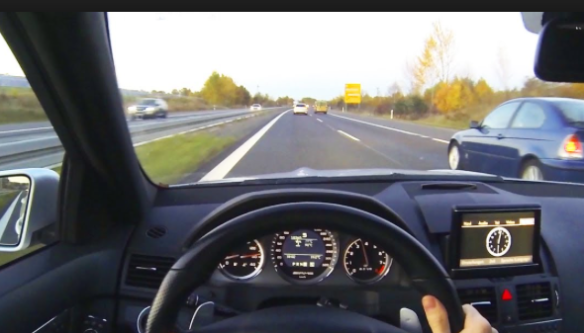
Or are we zombies?
Frequently, perhaps most of the time, I feel I drive on “autopilot”. That is, I drive without awareness of driving. This is especially true when driving along highly familiar routes, such as my 1-hour commute from NJ to Brooklyn. While driving, my clear conscious experience is typically on something else: perhaps what’s on the radio, perhaps a problem at work, or a personal relationship. Clearly, however, my sensory motor system is working. I’m steering, turning, responding to other cars, etc. Others might suggest that I’m “multitasking”, switching between 2 conscious modes, but I don’t feel that’s the case.
So, I argue, there are two streams of brain processing: what I’m consciously “thinking” about —call that stream A. And the autopilot driving stream, call that stream B.
I frequently find that my memory for stream B (driving) is very poor. If suddenly I pay attention to stream B, perhaps there’s an urgent situation, Then streams A and B fuse. Typically, my memory for previous events in stream B is extremely poor. Existent, but poor.
Another situation; there’s a detour sign, forcing me off of my familiar route. Here is what I do. First, ask “where am I?”. I struggle to identify my location, and place it on a map-like representation of my route. This is usually difficult. During autopilot (stream B), maps aren’t involved. If not maps, what? Most likely a stimulus-response chain1.When (and if) I can generate my location on a map, I can try to chart an optimal route. This is all stream A.
So, what is stream B, the autopilot driving stream? I propose it’s a form of integrated sensory motor processing that that is not conscious2. It’s characteristically present during locomotion along familiar routes, although interesting to discover other stream B situations. It’s a model-free, context-free, representation-free sensory-motor chain. It has a number of interesting features, among them is weak access to episodic memory. I’d also argue that it’s a continuous stream, unlike consciousness, which is, I feel model-based and chunked. Also, being sensory-motor, its restricted to the immediate present. My guess is that stream B is closely linked to dorsal stream processing and locomotion. Things like optic flow play a major role.
Almost everyone knows about “autopilot” thinking. Why is this not an important concept, distinct from conscious experience? I suggest that the confusion is that stream A and stream B can merge. I can be aware of my driving, think of alternatives, think of where I am on the map. Since only stream A has ready storage in episodic memory or future planning, and stream B can incorporate into steam A, this leads to the notion that stream B is part of stream A. That is stream B, as exemplified in autopilot driving3, is part of consciousness. In my opinion, more interesting to explore stream B’s separate and characteristic properties.
1 Perhaps akin to what O’Keefe and Nadel call “taxon” navigation (as opposed to map-like “locale” navigation supported by the hippocampal mapping system).
2 “consciousness” is just a word; one might call stream b “flow” or a form of consciousness; I’ll leave it as “stream b” for now.
3 Walking is a second archetype of stream b. Thinking of walking along a familiar path through the woods while day dreaming, thinking about something else. Stream b is the flow of information that guides the specific direction you head and the steps you take, the moment-by-moment accommodations to irregularities along the route. Again, optic flow is a major set of sensory cues. The “affordances” described by JJ Gibson present the very limited number possible paths and choices, with stream b making the decisions (as long as they are easy). A feature of stream b processing is that it is effortless. There is no feeling of force or strain. If the path becomes very steep, and conscious effort is needed to proceed, streams a and b fuse.

Stream B ( the copilot) , would you distinguish it as the “now time” ( unable) from stream A ( consciousness) being able to “travel” in time (past, present and future) in order to get the task at hand done?
not sure what the question is. Stream B seems like “now time”. Not sure what the inability is. Are you asking whether frustration in ‘now time’ (unable to get the task at hand done) triggers stream A? Seems likely. Certainly sometimes.